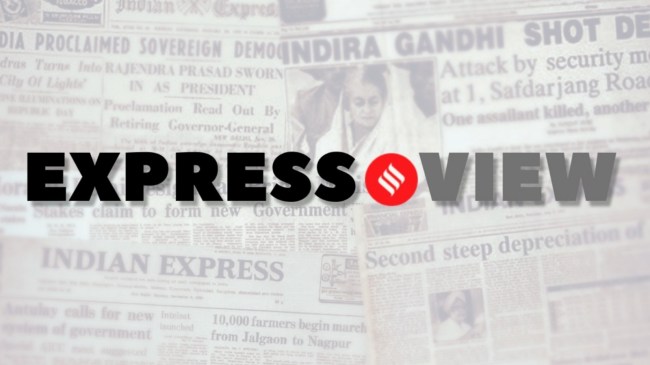Opinion On Maratha agitation, expanding economic pie is key — not reservation
Express View: There is room for development and policy interventions by the state that can help the community without relying on quotas alone. But, for that to happen, the current politics of brinksmanship must give way to a good-faith dialogue
 Across states — Jats in Haryana and Patidars in Gujarat, for example — “dominant” communities are demanding reservation. While they do have significant political influence and, often wield economic power in a rural land-based economy, that has not always translated to income and educational capital.
Across states — Jats in Haryana and Patidars in Gujarat, for example — “dominant” communities are demanding reservation. While they do have significant political influence and, often wield economic power in a rural land-based economy, that has not always translated to income and educational capital. The resurgence of the Maratha community’s agitation for reservation – and the disturbing violent turn it has taken — frames fundamental social, political and legal challenges for the ruling coalition and Maharashtra’s polity as a whole. The attacks on the homes of legislators and the vandalising of public property by the protesters only shrink the space for dialogue. It turns a vexed political issue into one that is about law and order. The hunger strike by the Maratha Kranti Morcha (MKM) leader Manoj Jarange Patil puts a clock on a resolution: However, the MKM leadership too must realise that such brinksmanship is not conducive to a durable solution. The “banning” of party leaders from certain areas and meetings does not bode well. Beyond the current moment, the Maratha agitation raises a question that has haunted many states: Are quotas the only way to address demands for development?
The Maharashtra government has gone down the reservation road before, only to come up against a legal wall. The 2018 Maharashtra State Reservation for Socially and Educationally Backward Classes (SEBC) Act, which provided the Maratha community reservation in public education and employment was struck down by a five-judge constitutional bench of the Supreme Court in 2021. First, the Court refused to breach the 50 per cent ceiling for reservation prescribed in Indra Sawhney. It also found that data collected by the Justice Gaikwad Commission to prove the “educational and economic backwardness” of the Maratha community, in fact, “proves that the Marathas are not socially and educationally backward”. The SEBC Act was a response to a long movement, which gained momentum in 2016. It provided for a separate quota for the community since their inclusion among OBCs would upturn the social applecart. The issues raised by the Court — and the delicate contours of the politics of reservation — remain as salient today.
Across states — Jats in Haryana and Patidars in Gujarat, for example — “dominant” communities are demanding reservation. While they do have significant political influence and, often wield economic power in a rural land-based economy, that has not always translated to income and educational capital. Take the Marathas. According to the Indian Human Development Survey, the poorest 40 per cent of the community got less than 13 per cent of the total income of the Marathas as of 2011-12. In the same period, only 8.1 per cent of people from the community had an undergraduate degree. Even today, there are large numbers of individuals within dominant communities who are unable to fulfil their aspirations. Reservation, however, is meant to address a lack of representation and backwardness at the community level. The way forward lies in looking beyond quotas: The economic and education pie must become larger for all Indians. Skill development in partnership with industry is a sure-fire way to raise incomes. There is also room for development and policy interventions by the state that can help the community without relying on quotas alone. But, for that to happen, the current politics of brinksmanship must give way to a good-faith dialogue.





